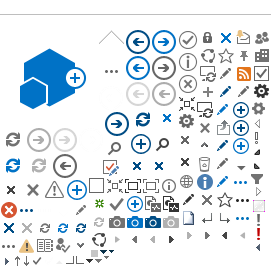ITU-T Study Group 16 - Multimedia terminals, systems and applications
(Study Period 2005 - 2008)
This page refers to a previous study period. For its most recent version, please see
here.
Study Group 16 leads the ITU-T work on multimedia (MM) terminals, systems and applications, including the coordination of the studies among the various ITU-T SGs. It is also the lead study group for ubiquitous applications (“e-everything”, such as e-health and e-business).
SG16 is active in all aspects of MM standardization, including terminals, architecture, protocols, security, mobility, interworking and quality of service. It focuses its studies on conferencing systems, directory services, speech, audio and visual coding, PSTN modems and interfaces, facsimile terminals, ICT accessibility, etc.
The SG is home to some very well known standards, including the V-series modem Recommendations (V.34, V.90 etc), without which the Internet may not enjoy its current state of ubiquity. Anyone accessing the Internet before the advent of ISDN and then broadband technologies would have used a modem built according to these ITU specifications. If proprietary standards had been adopted, the Internet's development could well have been far more fragmented. Even today modems remain a very important way of accessing the Internet, and so SG16's work to extend the life of modems for transport over next generation networks, is very important.
Also part of SG 16's heritage is its fax work, including standards for high-speed fax over PSTN, ISDN and IP networks, and a recent extension for colour fax transmission.
Work Highlights
Study Group 16 is additionally home to all media coding work in ITU-T. This includes narrowband and wideband speech coders, and work done together with ISO/IEC's JPEG and MPEG group in image and video compression, including JPEG and JPEG 2000 (T.80 and T.800 series) and MPEG 2 Video (H.262). Most recently this collaboration has led to the video compression standard known as H.264 (or MPEG-4 pt.10/ AVC). H.264/AVC is the first truly scalable video codec, delivering excellent quality across the entire bandwidth spectrum - from high definition television to videoconferencing and 3G mobile multimedia.
SG 16 is the origin of a wide family of successful videoconferencing systems tailored for several networks: H.320 and H.310 for narrow- and broadband ISDN, H.324 for PSTN and 3rd Generation mobile. Also very well known is H.323, the ITU standard for interoperability in audio, video and data transmissions over IP. It is the most widely used voice over IP (VoIP) communication protocol worldwide. It is estimated that systems using H.323 carry billions of voice minutes each month. H.323 is also widely used in videoconferencing systems.
Study Group 16 Flyers:
AccessibilityH.264H.350Multimedia Communication
